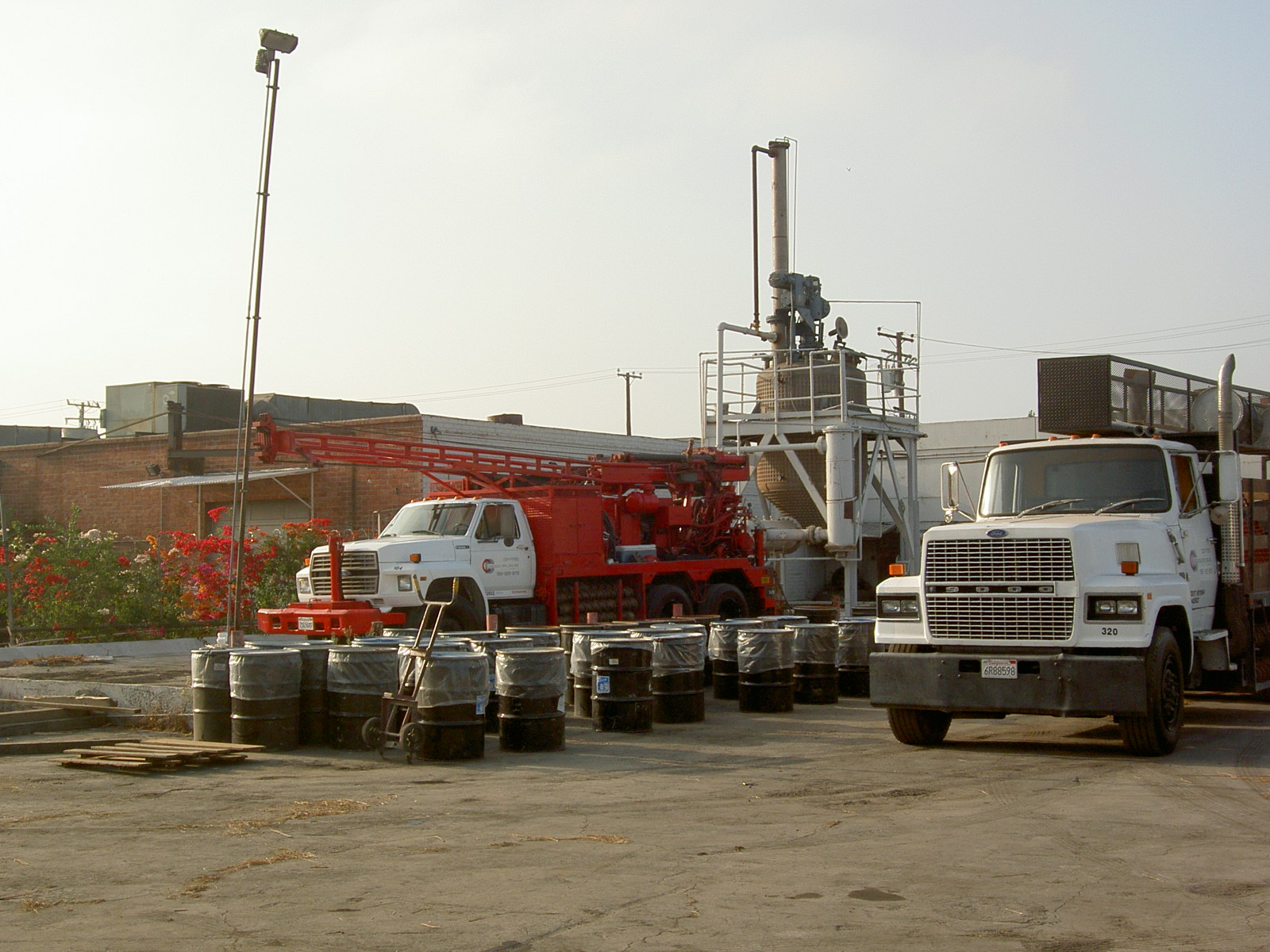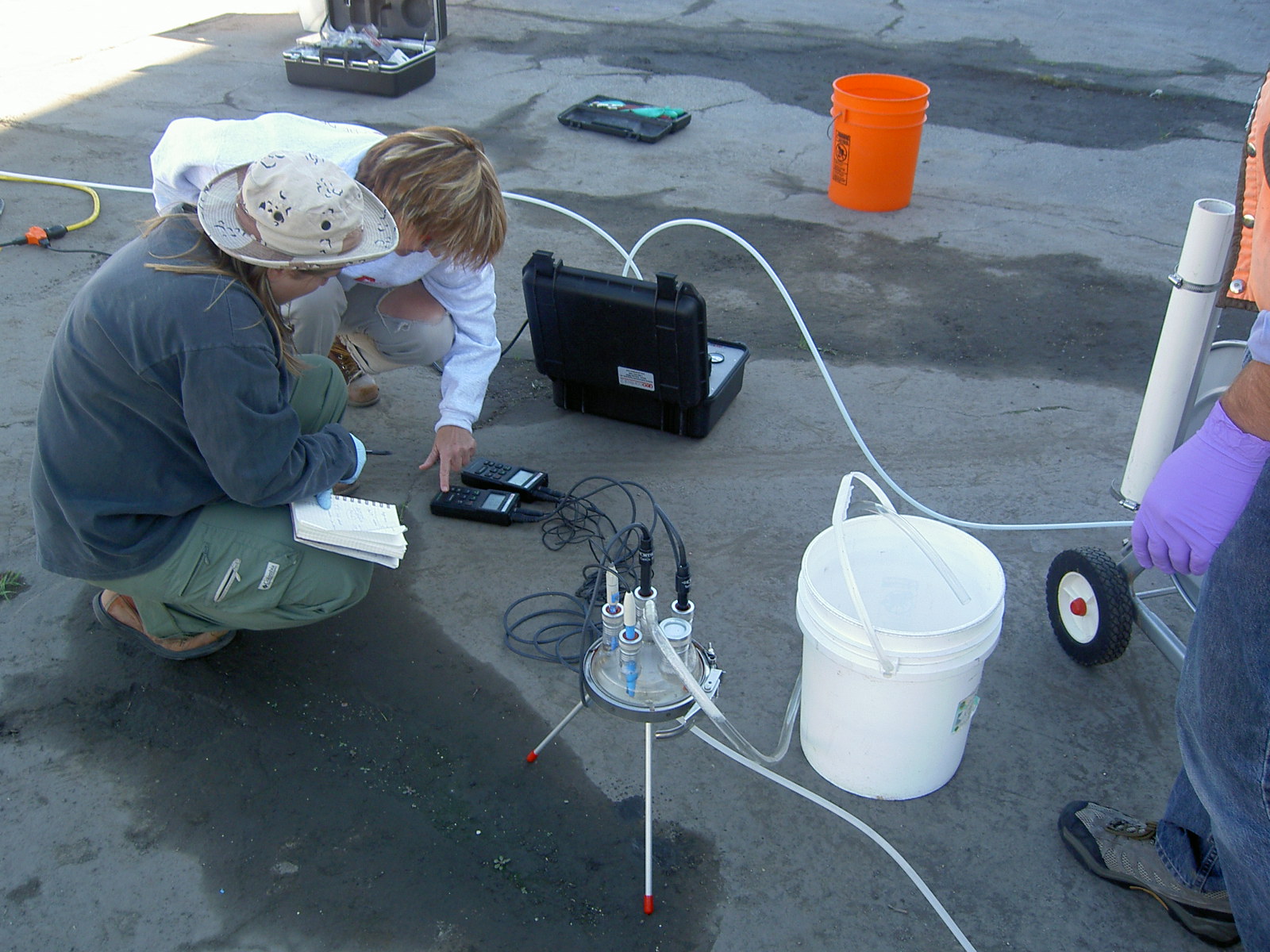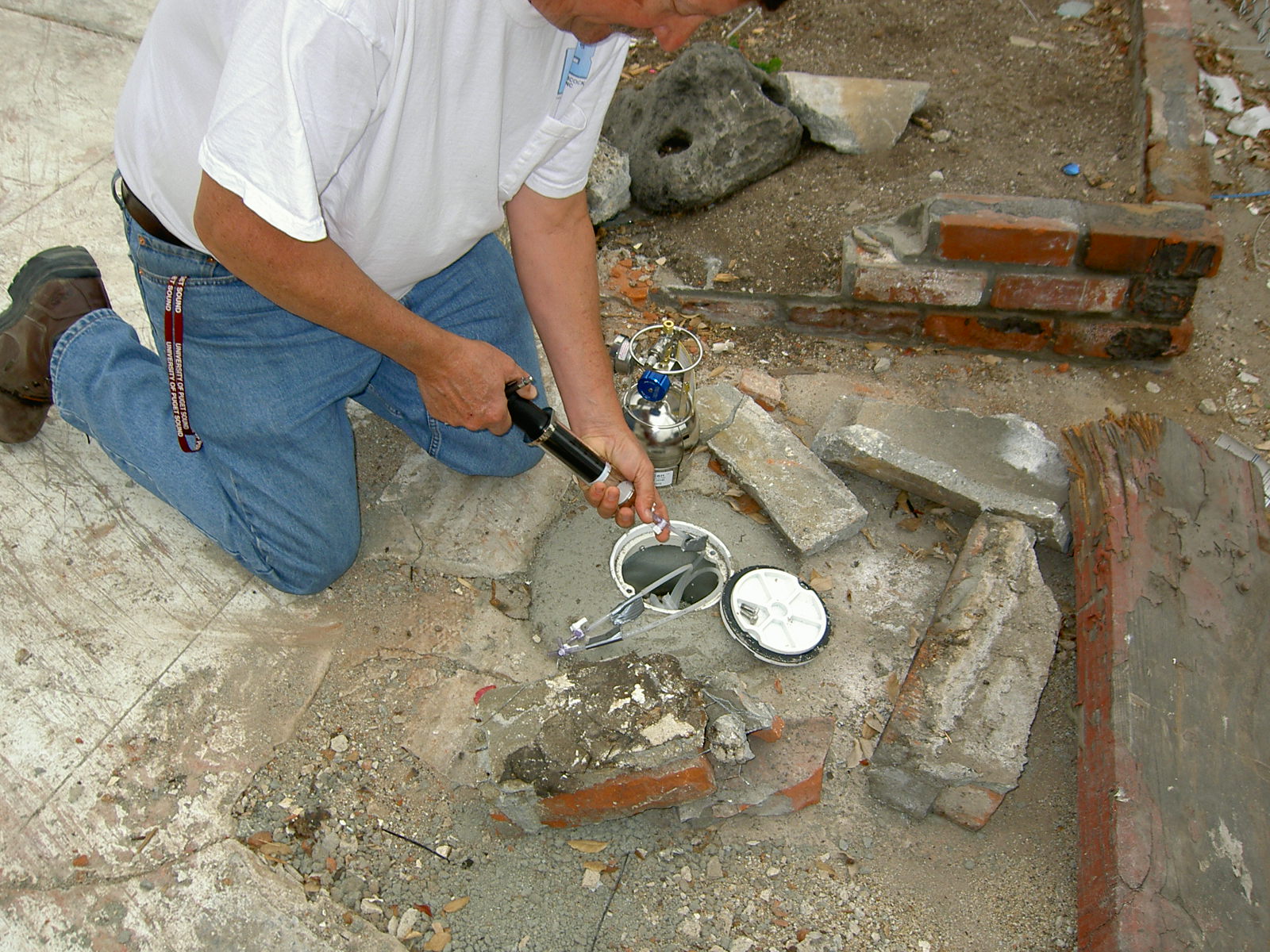Geology controls how and where contaminants move once they enter the ground. Determining soil and rock types and the flow of water and vapor through them dictates how a site is remediated.
A site investigation is conducted to determine the extent of impact and ascertain the local geology. Investigations take many different forms, from collecting a few shallow soil samples by hand to installing multiple deep wells to conduct an extensive aquifer test; the right size of an investigation is one that answers all the questions at hand.
Investigations require planning and communication between EnvApps, the client, and the regulator. Upfront planning allows the maximum amount of data to be gathered quickly and efficiently; communication allows everyone to be informed, and express opinions and concerns.
Investigation elements include:
- Identifying sample locations and media (soil, sediment, soil vapor, or groundwater) appropriate to the chemicals of concern.
- Selecting the right equipment to obtain the samples and the appropriate chemical or physical procedures with which to analyze them.
- Preparing a workplan for the regulatory agency, if necessary, including a site-specific health and safety plan.
- Implementing field work, minimizing the impact to ongoing site operations.
- Evaluating the data obtained and interpreting the results.
- Preparing a report documenting the field work, with conclusions and recommendations based on the data.
All EnvApps investigations are performed by a professional geologist who is able to make decisions in the field, and adjust sample locations and depths based on new information and conditions discovered as the field activities progress.


